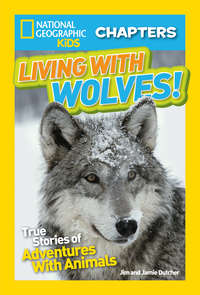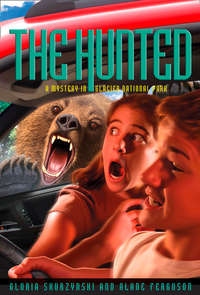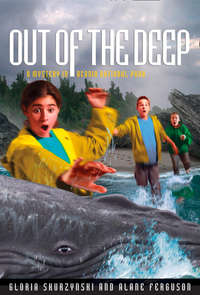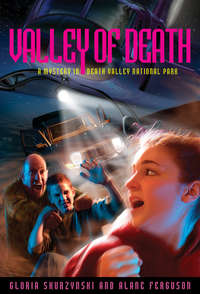
Полная версия
National Geographic Kids Chapters: Hoops to Hippos!: True Stories of a Basketball Star on Safari


Copyright © 2015 National Geographic Society
All rights reserved. Reproduction of the whole or any part of the contents without written permission from the publisher is prohibited.
Staff for This Book
Shelby Alinsky, Project Editor
Hillary Leo, Photo Editor
Callie Broaddus, Art Director
Ruth Ann Thompson, Designer
Marfé Ferguson Delano, Editor
Paige Towler, Editorial Assistant
Sanjida Rashid, Design Production Assistant
Colm McKeveny and Michael Cassady, Rights Clearance Specialists
Grace Hill, Managing Editor
Joan Gossett, Senior Production Editor
Lewis R. Bassford, Production Manager
George Bounelis, Manager, Production Services
Susan Borke, Legal and Business Affairs
Published by the National Geographic Society
Gary E. Knell, President and CEO
John M. Fahey, Chairman of the Board
Melina Gerosa Bellows, Chief Education Officer
Declan Moore, Chief Media Officer
Hector Sierra, Senior Vice President and General Manager, Book Division
Senior Management Team, Kids Publishing and Media Nancy Laties Feresten, Senior Vice President; Jennifer Emmett, Vice President, Editorial Director, Kids Books; Julie Vosburgh Agnone, Vice President, Editorial Operations; Rachel Buchholz, Editor and Vice President, NG Kids magazine; Michelle Sullivan, Vice President, Kids Digital; Eva Absher-Schantz, Design Director; Jay Sumner, Photo Director; Hannah August, Marketing Director; R. Gary Colbert, Production Director
Digital Anne McCormack, Director; Laura Goertzel, Sara Zeglin, Producers; Jed Winer, Special Projects Assistant; Emma Rigney, Creative Producer; Brian Ford, Video Producer; Bianca Bowman, Assistant Producer; Natalie Jones, Senior Product Manager

The National Geographic Society is one of the world’s largest nonprofit scientific and educational organizations. Founded in 1888 to “increase and diffuse geographic knowledge,” the Society’s mission is to inspire people to care about the planet. It reaches more than 400 million people worldwide each month through its official journal, National Geographic, and other magazines; National Geographic Channel; television documentaries; music; radio; films; books; DVDs; maps; exhibitions; live events; school publishing programs; interactive media; and merchandise. National Geographic has funded more than 10,000 scientific research, conservation, and exploration projects and supports an education program promoting geographic literacy.
For more information, please visit nationalgeographic.com, call 1-800-NGS LINE (647-5463), or write to the following address:
National Geographic Society
1145 17th Street N.W.
Washington, D.C. 20036-4688 U.S.A.
Visit us online at
nationalgeographic.com/books
For librarians and teachers: ngchildrensbooks.org
National Geographic supports K–12 educators with ELA Common Core Resources. Visit natgeoed.org/commoncore for more information.
More for kids from National Geographic: kids.nationalgeographic.com
For information about special discounts for bulk purchases, please contact National Geographic Books Special Sales: ngspecsales@ngs.org
For rights or permissions inquiries, please
contact National Geographic Books Subsidiary
Rights: ngbookrights@ngs.org
Trade paperback
ISBN: 978-1-4263-2052-1
eBook ISBN: 978-1-4263-2201-3
Reinforced library edition
ISBN: 978-1-4263-2053-8
v3.1
Version: 2017-07-11
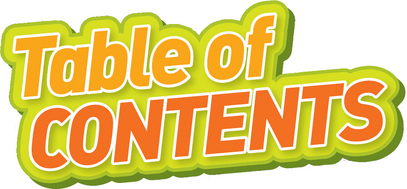
Cover
Title Page
Copyright
HOOPS TO HIPPOS!
Chapter 1: The Wild Life
Chapter 2: Safari Sights
Chapter 3: Fun and Games
CLOSE ENCOUNTERS
Chapter 1: Sneaky Visitors
Chapter 2: Too Close for Comfort
Chapter 3: Stuck in the Mud
WILD ABOUT WILD DOGS
Chapter 1: Teamwork
Chapter 2: Keeping Up!
Chapter 3: Picture Perfect
CRUNCH TIME
Chapter 1: Tagging Along With Rhinos
Chapter 2: Time-Out With Tigers
Chapter 3: Chilling With Cheetahs
DON’T MISS!
More Information
Dedication
Credits
Acknowledgments


That’s me, Boris Diaw. Two of my favorite things are playing hoops and taking photos of wild animals. I photographed these hippos when I was in Africa on safari, a special trip to see wildlife.

I loved watching this little lion cub lounge on a termite mound.

Hi, my name is Boris Diaw (sounds like DEE-ow). I’m a professional basketball player. I play for the National Basketball Association, or NBA, for short. I play all over the United States. I also play in Europe.
I have played hoops my whole life. I grew up in a small town named Bordeaux (sounds like bore-DOH) in southwest France. My mom was a pro basketball player, too. She used to shoot hoops with me. The game was her passion. Now it’s mine, too.
I love how basketball is a team sport. There’s a lot of spirit in it. Everyone on a team must work together. It’s like a pride of lions or a pack of African wild dogs.
Animals are another passion of mine. I love spending time outdoors and taking pictures of wild animals. I have taken photographs of wildlife in South Africa, Botswana (sounds like bot-SWAN-uh), Tanzania (sounds like tan-zan-EE-yuh), and India. I’ve watched hungry lions eat. I’ve tracked a tigress with her cubs. I have photographed colorful birds, rugged rhinos, and lounging leopards. When I’m at home in San Antonio, Texas, U.S.A., my photos remind me of the peace I feel in the wild.
I started taking pictures of wildlife when I was seven years old. I was on a trip with my mom and my brother, Martin. We had gone to Senegal (sounds like sen-ih-GAWL) to visit my father. Senegal is a small country on the west coast of Africa. My dad still lives there today, in a city named Dakar (sounds like dah-CAR).
Martin and I had never been to Africa before. It was a big adventure for us. Dakar was very different from where we lived. The city smelled musty. The food tasted spicy.
During the trip, I got a disposable camera. I liked taking pictures of Dakar and all the people around me. But what I really wanted to see and photograph were wild animals.
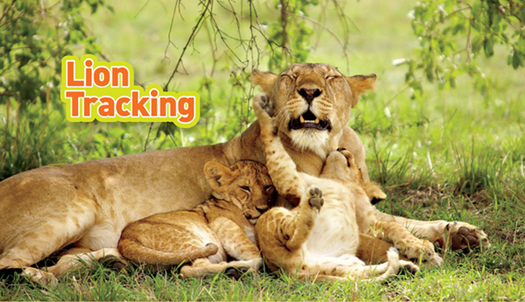
Many wildlife lovers on safari hope to see lions. Trackers help find lions by looking for clues in the bush. They look for paw prints or signs of a kill, such as an animal’s hide on the ground or bones. They listen for the roar of lions and calls of alarm from animals that lions like to eat. They sniff the air for the sharp smell of lion scat, or poop. Following clues from the bush just might lead to an awesome encounter with a big cat—just don’t get too close!
I was excited when we went to camp in the Niokolo-Koba (sounds like NYUH-koh-loh KOH-ba) National Park. My dad told us we’d see wild animals there. It felt like the longest drive ever—eight hours! As we drove deeper into Africa, it got hotter. We weren’t far from the Sahara. It was hotter than any place I knew. There were also lots of big, biting flies.
At the wildlife park, we saw hippos, monkeys, and antelope. We saw zebras and giraffes, too. I watched warthogs and their babies. They trotted around with tails held high. We watched and listened to birds, such as parrots and bee-eaters.
Wild animals here seemed different from the animals I loved watching at the zoo in France. In the Niokolo-Koba, I realized that wild animals have lives even when people aren’t watching.
Did You Know?
When it walks, a lion leaves paw prints as long as five inches (13 cm)! Each print has four toe indents, but no claw marks.
One night at the park, I started wondering what animals might be watching me. We were staying in little huts with folding beds, but no doors. Earlier that day, I had heard someone say they had spotted fresh lion tracks. What if a lion looked into our hut? I thought. What if it sneaks in? The idea scared me, but I was excited, too! I kept my eyes open—and my camera ready.
I never did see a lion on that trip. Too soon, we went back to Dakar, back to people and cars and noise. Then my mom, brother, and I flew home to France. But I wanted to go back into the wild. I loved looking at the pictures I took on my trip.
At home, I got back to basketball. I loved it so much, I played all day, every day. I still loved to explore nature, too. Every summer I spent three weeks camping. I built tree houses. I liked being away from the city. I liked hearing only the sounds of wildlife. It reminded me of the wildlife park in Senegal.
When I was a teenager, I went to a boarding school in Paris. Many serious basketball players go to high school there. My life was all about basketball. After high school, I played for a pro basketball club in France for three years. Then in 2003, I got drafted into the NBA and moved to the United States.


While riding in the safari vehicle, we all looked and listened for wild animals. One day, I snapped this shot of a young elephant chasing a baby giraffe.

After my rookie, or first, year in the NBA, I finally had time to go back to Senegal. I called Martin, and we organized a trip to visit family. I bought a camera at the airport in Paris. It made me think of the camera I had when I was seven. Just like then, I wanted to remember what I did and saw on my trip.
I took pictures of people in Dakar while they waited for buses or crossed the street. The city was so colorful. The wild areas we visited were colorful, too. One day, we visited a place called Lake Retba (sounds like ret-BAH), which is known as the “pink lake.” A special bacteria (sounds like back-TEER-ee-uh) growing in the water turns it pink. I took pictures of the lake and the birds. I had fun figuring out how my new camera worked.
A year later, after another season playing in the NBA, I returned to Africa again. But this time, I went to the country of South Africa. I planned to go on a true safari. I wanted to watch wild predators (sounds like PRED-uh-ters) hunt in their natural habitat. I bought better camera equipment. And I invited my mom to join me.
We went to Kruger National Park. When we got there, the thing that struck me was the peace. No noise, no cars, no nothing. My phone didn’t work. I couldn’t even get text messages. That was a good thing! It felt like those days as a kid, when I used to go camping.
I usually love to sleep late in the morning. But I was excited about heading out on our morning game drives before dawn. “Game” are the animals you see while driving around a huge park like this one. Our first morning, we drove through the bush in the dark. We rode in a vehicle without a roof or sides. It easily went through tall grass and bushes, and even over small trees. Sticky spiderwebs stuck to my face as we rode along. Branches scraped our arms. We could hear birds squawking and insects buzzing. It was great.
The tracker—the person who looks and listens for signs of animals—sat in a special chair on the hood of the vehicle. He scanned the darkness with a bright light. He kept an eye on the dirt road for tracks. He sniffed the air for fresh poop. I wondered what animals we would see.
The tracker also listened for clues, such as the alarm calls that baboons make when big predators are near. We saw a hyena (sounds like hi-EE-nuh) running along the road. It turned and looked at us with glowing yellow eyes.
At one point, the guide stopped the vehicle. He reached into a low tree. When he pulled his arm out, a green chameleon (sounds like kuh-MEEL-yun) clung to his hand. It was cool to see the little reptile’s green toes and its big rotating eyes so close up. The guide placed it back on a branch, and we were off again.
Did You Know?
A chameleon shoots out its long, sticky tongue to snag an insect, then draws the meal back to its mouth.
After the sun came up, we saw a herd of elephants. The guide turned off the vehicle. We sat there not making a sound. It was like we were part of the herd. We listened as the elephants whispered to one another in rumbles. We watched them shove the tall grass into their mouths with their trunks. I noticed a baby elephant standing in between the legs of his mom. He was so small!
That day, we also watched lions sleeping in the shade. We saw a rhino drinking at a water hole. Lions, rhinos, and elephants are three of the animals in the “big five.” These are the five animals people most want to see on safari. The other animals in the big five are leopards and African buffalo. At Kruger National Park, we saw all of the big five.
Though I wasn’t a rookie basketball player anymore, I was definitely a rookie photographer. I took lots of pictures. I might take 200 pictures of an elephant eating leaves! Back at the lodge, I would have to sort through hundreds of almost identical pictures. I realized I had to think before I clicked. The mistakes I made helped me learn to be a better photographer.


Like me, many people travel to South Africa to see the “big five.” On one of my trips, a safari guide clued me in about the “little five.”
They’re also fun to see. They are the:
1. rhinoceros beetle
2. elephant shrew
3. buffalo weaver
4. leopard tortoise
5. ant lion
No matter what animal I saw, big or small, it always fascinated me.
Конец ознакомительного фрагмента.
Текст предоставлен ООО «ЛитРес».
Прочитайте эту книгу целиком, купив полную легальную версию на ЛитРес.
Безопасно оплатить книгу можно банковской картой Visa, MasterCard, Maestro, со счета мобильного телефона, с платежного терминала, в салоне МТС или Связной, через PayPal, WebMoney, Яндекс.Деньги, QIWI Кошелек, бонусными картами или другим удобным Вам способом.


